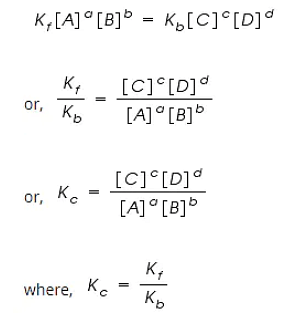A solution containing 18.25g of HCL and 500g of water. Find molality.
Solution and Explanation
Molality (m)=Mass of solvent in kg
No. of mass of solute
Molality =5000.5×1000=1m
Top Questions on Solutions
- 10 mL of 2 M NaOH solution is added to 20 mL of 1 M HCl solution kept in a beaker. Now, 10 mL of this mixture is poured into a volumetric flask of 100 mL containing 2 moles of HCl and made the volume upto the mark with distilled water. The solution in this flask is :
- If equal volumes of AB and XY (both are salts) aqueous solutions are mixed, which of the following combination will give precipitate of AY, at 300 K?
- 20 mL of 2 M NaOH solution is added to 400 mL of 0.5 M NaOH solution. The final concentration of the solution is \(\_\_\_\_\_\) x \(10^{-2}\)M. (Nearest integer)
- Shweta mixed two liquids A and B of 10 mL each. After mixing, the volume of the solution was found to be 20.2 mL.
(i) Why was there a volume change after mixing the liquids?
(ii) Will there be an increase or decrease of temperature after mixing?
(iii) Give one example for this type of solution. - Give reasons:
(a) Cooking is faster in a pressure cooker than in an open pan.
(b) On mixing liquid X and liquid Y, volume of the resulting solution decreases. What type of deviation from Raoult's law is shown by the resulting solution? What change in temperature would you observe after mixing liquids X and Y?
Questions Asked in AP EAMCET exam
- In the diodes shown in the diagrams, which one is reverse biased?
- AP EAMCET - 2024
- Semiconductor electronics: materials, devices and simple circuits
- Numerically greatest term in the expansion of \( (5 + 3x)^6 \), when \( x = 1 \), is:
- AP EAMCET - 2024
- Binomial theorem
- A is a point on the circle with radius 8 and center at O. A particle P is moving on the circumference of the circle starting from A. M is the foot of the perpendicular from P on OA and \( \angle POM = \theta \). When \( OM = 4 \) and \( \frac{d\theta}{dt} = 6 \) radians/sec, then the rate of change of PM is (in units/sec):
- If \( \theta \) is the angle between \( \vec{f} = i + 2j - 3k \) and \( \vec{g} = 2i - 3j + ak \) and \( \sin \theta = \frac{\sqrt{24}}{28} \), then \( 7a^2 + 24a = \) ?
- AP EAMCET - 2024
- Vector Algebra
- The interval containing all the real values of \( x \) such that the real valued function \[ f(x) = \sqrt{x} + \frac{1}{\sqrt{x}} \] is strictly increasing is:
- AP EAMCET - 2024
- Functions
Concepts Used:
Law of Chemical Equilibrium
Law of Chemical Equilibrium states that at a constant temperature, the rate of a chemical reaction is directly proportional to the product of the molar concentrations of the reactants each raised to a power equal to the corresponding stoichiometric coefficients as represented by the balanced chemical equation.
Let us consider a general reversible reaction;
A+B ↔ C+D
After some time, there is a reduction in reactants A and B and an accumulation of the products C and D. As a result, the rate of the forward reaction decreases and that of backward reaction increases.
Eventually, the two reactions occur at the same rate and a state of equilibrium is attained.
By applying the Law of Mass Action;
The rate of forward reaction;
Rf = Kf [A]a [B]b
The rate of backward reaction;
Rb = Kb [C]c [D]d
Where,
[A], [B], [C] and [D] are the concentrations of A, B, C and D at equilibrium respectively.
a, b, c, and d are the stoichiometric coefficients of A, B, C and D respectively.
Kf and Kb are the rate constants of forward and backward reactions.
However, at equilibrium,
Rate of forward reaction = Rate of backward reaction.

Kc is called the equilibrium constant expressed in terms of molar concentrations.
The above equation is known as the equation of Law of Chemical Equilibrium.